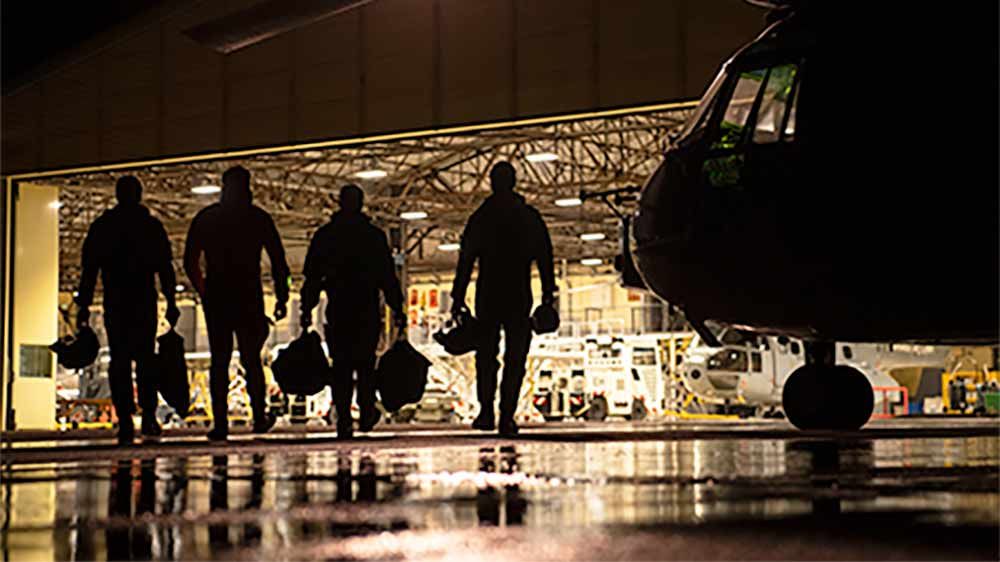
Military MRO: a tale of generations (II of II)
June 20th, 2024 - By Murielle Delaporte
Military MRO and the Need for Customisation
The second part of this article focuses on two broad characteristics about what could be referred to as "multigenerational military MRO".
1. The Different logic between commercial and military MRO life cycles and its structural impact
The first observation that needs to be made is the fundamental difference that exists between the commercial and military aeronautical sectors in terms of life cycles.Whereas the commercial sector prefers to renew its fleet rapidly and regularly for economic reasons (performance, fuel consumption, maintenance), the military sector tends to keep its own, often of small size (except in the United States) and sometimes more than half a century old: the Puma is one example, but there are many others, such as the KC-135 fleet with which the US Air Force had to make do until recently, or the CH-47 Chinook, whose family has been in service since 1962.
There are many reasons for this, but most of them are associated with the post-Cold War Peace dividends and various military budget constraints. As a result, the support and maintenance organization of the armed forces did adjust to the needs of its units in an organic way. Most European armed forces became accustomed to maintaining increasingly older equipment with tools and know-how that departed from traditional industrial principles.
In France, the existence of a public service called SIAé (“Service Industriel de l'Aéronautique”) is characteristic of a deliberate policy to maintain not only human technical skills, but also a specific supply chain for older generation equipment in which no private commercial industry would invest.
"[ structures called] “Ateliers Industriels Aéronautiques” keep these aircraft operational, even after private companies have stopped maintaining them. They are becoming benchmarks in aeronautical expertise, developing cutting-edge metrology and repair techniques, and bringing together skills that are increasingly rare today. This is all the more true given that these workshops are the last remaining repositories of parts that were formerly used in older aircraft and are no longer manufactured today. They are therefore invaluable resources for the nation, which is not dependent on a third party to maintain the valour of its air fleet, and can if necessary be self-sufficient ", wrote Amélie Spire in 2010 in an article devoted to the MRO of the Puma at the Cuers AIA (1).
The cohabitation of a mixed public-private military MRO model, in which the public and private sectors tend to complement each other, is justified here. In times of crisis, this model also finds a certain legitimacy in the face of the need to intervene with an urgency that is incompatible with contractual rules, or even to act in theatres of external operations, as the SIAé is equipped with specific military personnel who can be rapidly mobilized for this purpose.
2. Striking a balance between multigenerational coexistence and the cost of military MRO: the impact on training
The difficulty for military planners is to juggle fleets of different generations, both from a tactical-operational point of view and from a maintenance point of view, in order to meet the needs of the forces and fulfill the missions assigned to them. This is also one of the reasons why it is very difficult to impose a single MRO strategy in the armed forces and a single fleet management methodology: on the contrary, each and every standard within a fleet requires a tailor-made and personalized MRO.
This multi-faceted MRO is also linked to the operational environment, which generally requires supporting a diversity of micro-fleets (aircraft, technicians and support tools) and a demanding tactical use of equipment in theatres often characterized by harshness (heat, humidity, salinity, and so on).
The generational break between mechanical and digital aircraft design has further enhanced this dilemma, in the sense that upgrades and other modernization programs are of course increasingly carried out through software upgrades. This digitalization of MRO has also led to the development of technical support tools that cannot be used for older generations, which makes the logistics necessary to deploy different types of older and newer aircraft more complex.Hence the need in recent years to bring together old-generation mechanics and new-generation maintenance staff, whose training, skills and even professions are very different. For example, there are no more flight engineers onboard the A400M or the MRTT.
While the fleets of the past required specialized MRO personnel for each aircraft, the latter could also operate on several fleets, limiting the logistical footprint. Today's fleet personnel, on the other hand, benefit from a global and increasingly unified digital vision of the aircraft (technical and logistical information system), which has its advantages, but obviously requires different training and a different type of management.
Dominated by the adoption of the famous " Lean " management practices in the 2000’s, today’s fleet optimization as far as MRO is concerned depends more on the widespread use of disruptive technologies and "intelligent" digitization. Another topic soon to be explored on this website!
Footnote
(1) https://operationnels.com/2010/09/13/mco-puma-2/
Photo: a Puma crew from the 1/44 Solenzara helicopter squadron – specialized in Search and Rescue - returns from a night mission © Jean-Luc Brunet, French Air and Space Force, Solenzara, April 10th, 2024
 English (United Kingdom)
English (United Kingdom)  Français (France)
Français (France)